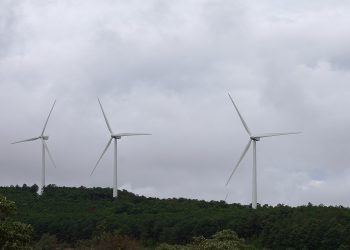The Wolastoq Grand Council is supporting their youth’s proposal to change the name of the Saint John River back to its original and proper name, the Wolastoq.
Wolastoq means “beautiful and bountiful river” in the Wolastoq (Maliseet) language.
“In a sincere implication of ‘Truth and Reconciliation,’ Wolastoqewiyik soundly propose to reinstate the name ‘Wolastoq’ to the river commonly known as Saint John River,” says Ron Tremblay, the Wolastoq Grand Council Chief.
The call for individuals and groups to support the name change issued by the Wolastoq Grand Council states that, “Wolastoq is our identity,” and argues that, “scientific studies have now confirmed what our people have always known: water has memory. Once we address the river as ‘Wolastoq,’ this river will remember its original name.”
Minister of Indigenous and Northern Affairs Canada Carolyn Bennett has assured the Wolastoq Grand Council in writing that, “Canada is committed to a renewed Nation-to-Nation relationship with indigenous peoples based on the recognition of rights, respect, cooperation and partnership.”
Minister Bennett also stated that, “Achieving full reconciliation between indigenous and non-indigenous people in Canada is at the heart of Indigenous and Northern Affairs Canada’s mandate, and that the government of Canada will engage with Indigenous peoples, provinces, territories, and Canadians on how to implement the Declaration in accordance with Canada’s Constitution.”
For the Wolastoq Grand Council, the act of changing the river’s name back to its original name will initiate a process of reconciliation and create opportunities for discussions and engagement around indigenous issues.
The Wolastoq Grand Council is requesting support letters from allies, including individuals and organizations. The Peace and Friendship Alliance, Council of Canadians Fredericton Chapter and No One Is Illegal Fredericton are organizations that support the name change.
Alma Brooks, a member of the Wolastoq Grand Council and St. Mary’s First Nation, told the NB Media Co-op in 2012, “The land and water in New Brunswick has never been ceded by our people. The time has long passed for us, natives and non-natives, to get to know each other. It’s been over 600 years. We need to protect Aboriginal title to land and water. The process of decolonization needs to begin and it will be a long process. This is just the beginning.”
When talking about the Wolastoq, Brooks said, “My people used to drink from the river and now you can’t even swim in it. The river is poisoned and so is the fish.”
Both Tremblay and Brooks have visited the UN Permanent Forum on Indigenous Issues in New York to share their community’s struggles with resource extraction. They are particularly concerned with the Sisson tungsten and molybdenum mine and the Energy East oil pipeline that is proposed on their territory.
Renaming the lands was part of the theft of lands of the Wolastoqewiyik as described by Andrea Bear-Nicholas, a professor emeritus and former chair of Native Studies at St. Thomas University. In her award-winning paper, published in 2016 in the Journal of Canadian Studies, Bear Nicholas wrote about the erasure of the ugly realities of the dispossession and displacement of the Maliseet by colonial artists. She noted, “By ignoring these realities, artists kept their audiences, especially potential immigrants, oblivious to Indigenous suffering, and effectively assisted, either wittingly or not, in the ongoing dispossession and displacement of Maliseets.”






![‘Continuum of genocide’: Pentagon funding of Sisson mine provokes renewed opposition from Wolastoq Elders [video]](https://nbmediacoop.org/wp-content/uploads/2025/07/SissonMine-2-120x86.jpg)

![NDP leadership hopeful submits official bid, challenging ‘undemocratic’ vetting process [video]](https://nbmediacoop.org/wp-content/uploads/2025/11/EnglerNov72025-120x86.jpg)

